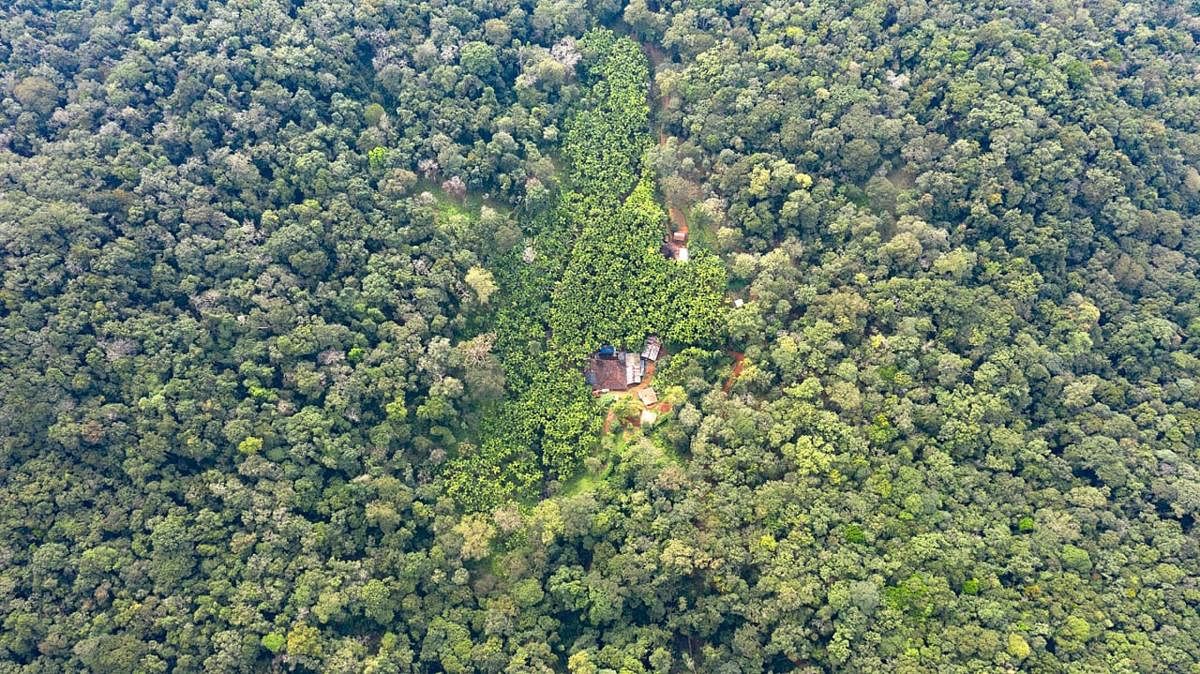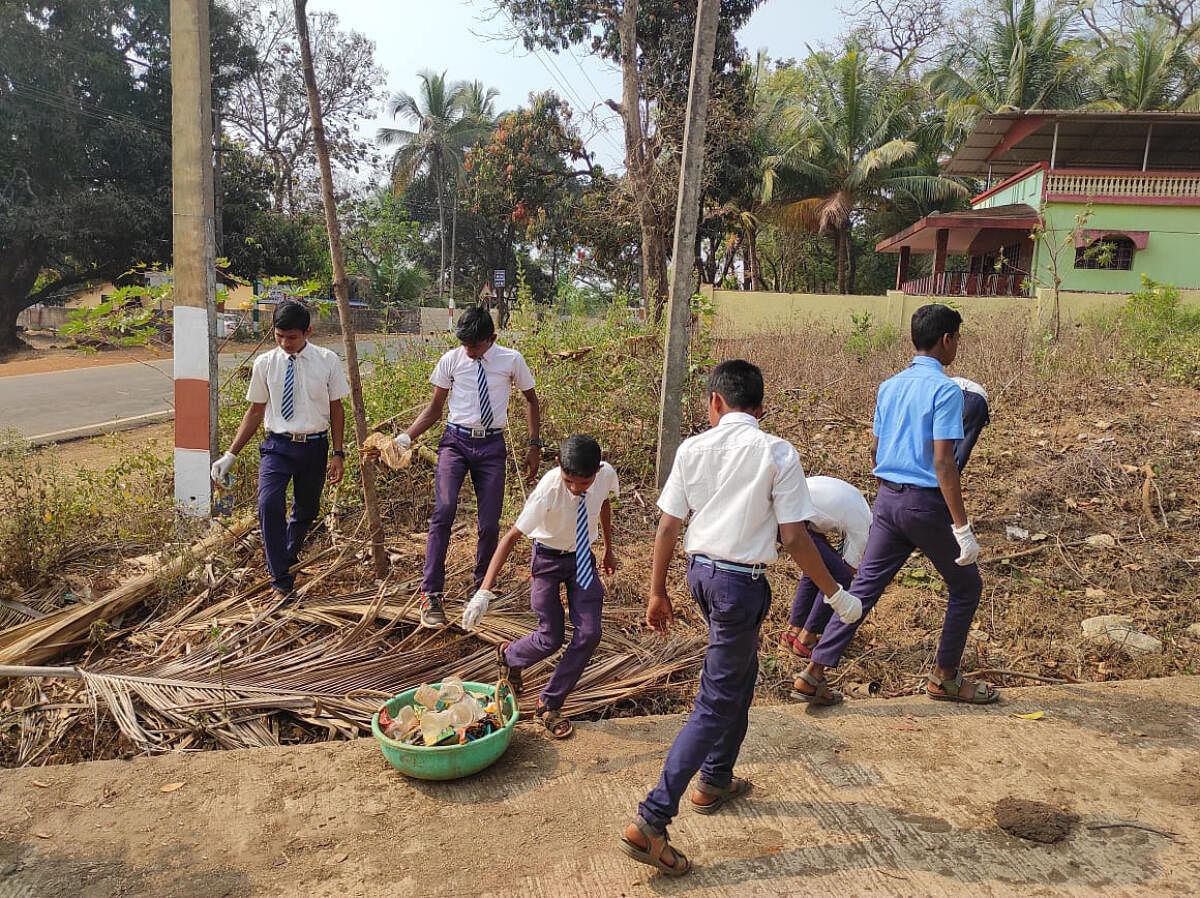

At a time when several villages located within the forests of the state are at loggerheads with forest officials, the officials of the Kali Tiger Reserve (KTR) in Uttara Kannada have come forward with a unique project to help communities living in the tiger reserve conserve wildlife.
“Though voluntary relocation is ongoing in villages within the limits of KTR, the pressure on the forest is still high. Reaching wildlife conservation goals is challenging in such a situation,” says Anshi KTR Assistant Conservator of Forests Amarakshar V M.
Officials realised that the only way to make strides in conservation was by winning the confidence of local communities and working with them. Thus emerged the idea of their community-centred initiative to increase awareness and reduce dependence on forest resources.
KTR has entered into an understanding with the Kateli Gram Panchayat in Kumbarwada village, Joida taluk, as a first-of-its-kind initiative in the state. Titled SWAYAM-ENEC (Saving Wildlife in Association with Young Aspiring Minds — An Eco-development and Nature Education Centre), the initiative aims to generate livelihoods and organise nature education programmes.
Waste management
Kateli comprises seven revenue villages with a population of around 4,500 people. Around 25 majires (small human settlements) in this gram panchayat come under the core area of the KTR. While the wet waste generated here is used in home gardens as manure, the gram panchayat found it extremely difficult to manage dry waste.
Plastic and paper waste discarded by visitors and tourists using the Ramnagar-Karwar road that passes through the gram panchayat was particularly a matter of concern. In addition to harming the natural ecology of the area, the waste was also a threat to the wildlife, which would unknowingly attempt to rifle through the garbage. This indirectly led to an increase in human-animal conflict as well.
The worsening scenario prompted the gram panchayat to plan a dry waste disposal plant. However, with strict forest laws in place, it was difficult to set up a plant like those in other gram panchayats in the vicinity.
The foresters then came up with SWAYAM-ENEC. Through the project, the gram panchayat obtained the necessary approvals and is now setting up the solid waste management plant at a cost of Rs 10 lakh.
“As several tourist destinations like Dandeli, Ulavi and other places are close to Kateli Gram Panchayat, dry waste generation has been increasing day by day,” explains Panchayat Development Officer Santosh Anvekar. It is difficult to keep an eye on tourists and prevent them from littering the area, the officer adds.
The GP is also buying a waste collection vehicle, and prioritising the reuse and recycling of waste using advanced technology.
In addition, KTR is renovating and extending a heritage building in the area to house the ‘Eco-development and Nature Education Centre’. Here, it plans to engage local people in employment generation activities. The aim of the programme is to bolster their economic and social status and support wildlife conservation activities.
“Community engagement is most important for tiger conservation, and we plan to achieve this through eco-friendly development models,” says KTR Field Director Maria Christu Raj.
Employment generation
“Kumbarwada means ‘a village of potters’. We have talked with the Central Village Pottery Institute in Belagavi’s Khanapur to train local people so they can come up with souvenirs for tourists. This will be a win-win situation,” Amarakshar says.
The area is also known for generating arecanut and coconut fibre. The programme includes a plan to train women in making coir products. The Coir Development Authority is gearing up to hold a training programme in a month’s time.
Apart from this, the programme includes the processing of agriculture products like roots and tuber, as well as apiculture, through which pure organic honey can be produced and sold.
“These initiatives will not only prevent local people from moving to neighbouring Goa in search of employment, but also motivate them to participate in activities related to conservation. It will introduce sustainable practices and give people the time to act as guards of the forest,” said gram panchayat member Subin Kamat.
The reserve itself is an abode of evergreen, semi-deciduous vegetation and grasslands, as well as several rare species. So, the centre will also be used to carry out research activities with the support of local people and with the technical assistance of the Wildlife Research Training Centre in Dandeli.
“The centre will be developed into a resource hub where people can learn about the work of the foresters. The community will also learn more about the significance of the native environment and wildlife,” says Amarakshar. This will ultimately benefit conservationists, enthusiasts and others in coming up with solutions, he explains.
The KTR also plans to have computer, e-learning and library facilities at the centre to keep local students abreast with the latest developments.